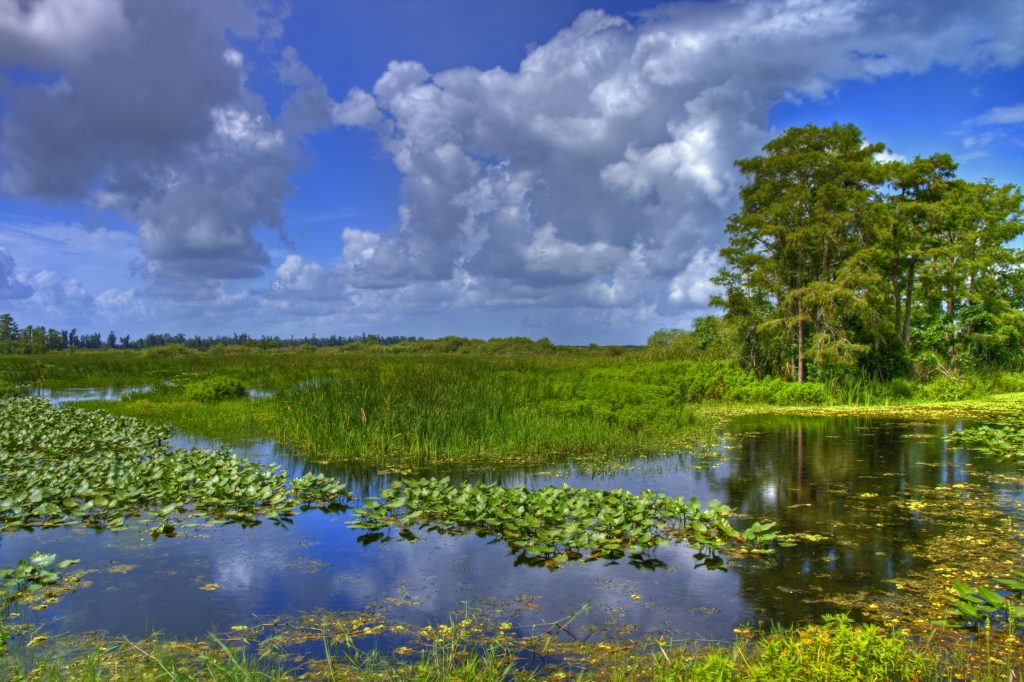
By Ashley Robinson
Increased adoption of best management practices (BMPs) by agricultural producers is a potential tool for improving water resource conditions. However, the economic feasibility of this approach is largely unknown in watersheds connected to the Florida aquifer. The University of Florida (UF) has joined three other Southeastern universities in research efforts to help ensure water for agricultural production while maintaining healthy water sources.
PROJECT PURPOSE
The UF Water Institute, Auburn University, the University of Georgia and Albany State University are collaborating to gather the first comprehensive look at what the tradeoffs would be biophysically and economically to achieve state water resource standards.
The five-year project, funded by the U.S. Department of Agriculture, seeks to safeguard the sustainability of production agriculture and forestry while protecting water quantity, quality and habitat of the Florida aquifer and the springs and rivers it feeds.
The Florida aquifer is among the largest and most productive aquifers in the world. The aquifer is a vital resource shared by Alabama, Georgia and Florida by providing irrigation for farms that contribute billions of dollars annually to the economy. The Florida aquifer is also responsible for supplying drinking water to over 10 million people.
Researchers began by conducting field experiments to develop farming practices that would reduce water use and fertilizer loss while still maintaining profitable crop yields.
During the recent Florida Water Institute Symposium, Damian Adams, associate professor at the University of Florida (UF), discussed his studies and the results seen in the first two years of the project.
“Ultimately, it will take multiple steps for us to understand what it would take for landowners and growers to adopt different management practices, some of which might be pretty expensive, carry additional risks, or may require to completely change their land use,” says Adams. “In some cases, we’re talking about some pretty big changes, which may not be feasible. They may not fit what the grower wants to do with their land or what their family wants them to do. Or it may just be cost prohibitive. However, we’re going to try to consider the broad suite of these different approaches.”
RESEARCH OBJECTIVES
According to Adams, the research aims to understand how much it’s going to cost to achieve different levels of water resource improvement and how many acres would be affected in achieving water resource standards. Through grower interviews, researchers were able to explore economic and environmental tradeoffs among alternative scenarios of climate, land use and BMP adoption. Fortunately, in many of cases, the tradeoffs look great for the grower.
The next step was to survey growers to determine what level of incentive payments would be
required to ensure their participation in voluntary BMPs, which can often require high start-up or installation costs as well as operating costs. The survey included economic valuation questions designed to understand producer preferences.
The results of the survey will be used to estimate a supply curve for water resource improvements from producers as a function of price, and in the context of a hypothetical payments program, can predict levels of producer participation and the subsequent changes in water resource conditions in the area.
“We’ve just finished year two. By the end of the fifth year, we should have an up-and-running model that will reflect what the stakeholders have asked this model to be able to do,” Adams says. “Hopefully by that point, this will be enough for policymakers, growers and all stakeholders involved to have a clearer picture of what it means to move forward and achieve the multiple objectives of safeguarding our water but also safeguarding our rural economies.”
The survey for grower feedback is still open. Growers or landowners who would like to participate in the survey can email Adams at dcadams@ufl.edu for details.









